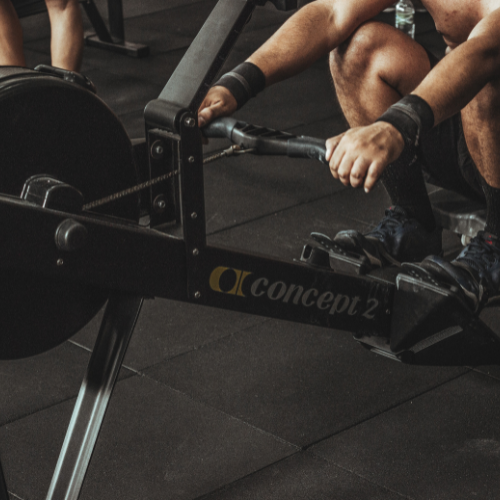Arthritis affects millions of people worldwide, with knee osteoarthritis being one of the most common types. This condition leads to pain, stiffness, and swelling, making everyday activities like walking, climbing stairs, or exercising a challenge.
Despite these challenges, regular exercise is essential for maintaining knee strength and mobility. One exercise that often comes up as a potential option is rowing—a low-impact workout that offers several benefits for those with knee arthritis. But is it the right choice for you? Let’s explore the pros and cons of rowing for arthritic knees and what other exercises may help improve knee function.
Benefits of Rowing for Arthritic Knees
1. Low-Impact Exercise
Unlike running or jumping, rowing is a low-impact activity that places minimal stress on the knees. This makes it a safer alternative for those with arthritis, allowing movement without excessive joint strain.
2. Full-Body Workout
Rowing engages multiple muscle groups, including the legs, core, back, and arms. Strengthening these areas can help support the knee joint, improving overall mobility and reducing pain over time.
3. Improves Joint Flexibility
The continuous movement of rowing helps keep the joints moving, reducing stiffness and improving range of motion—two major concerns for those with knee arthritis.
4. Aids in Weight Management
Excess body weight increases stress on the knees, worsening arthritis symptoms. Rowing is an effective way to burn calories and support weight management, ultimately reducing the strain on your joints.
5. Cardiovascular Benefits
The UK Chief Medical Officers recommend at least 150 minutes of moderate-intensity exercise per week to improve heart health. Rowing provides an excellent cardiovascular workout, helping to boost circulation and overall fitness.

Potential Risks of Rowing for Arthritic Knees
1. Requires Proper Technique
Rowing demands good form to avoid unnecessary strain on the knees and lower back. Poor technique can lead to pain or even injury. If you’re new to rowing, consider working with a professional to learn the correct movements.
2. Forced Knee Flexion
Many arthritic knees don’t tolerate deep bending (flexion) well. While rowing encourages movement, forcing your knee into an extreme bend can increase discomfort. To prevent this, adjust your stroke and avoid excessive knee bending – if this irritates your knee.
3. Limited Accessibility
Not everyone has easy access to a rowing machine or water for outdoor rowing. Investing in equipment or finding a gym with the right facilities can be a barrier.
4. Risk of Overuse & Flare-Ups
Repetitive rowing can lead to inflammation or flare-ups in already sensitive knees. It’s essential to listen to your body, take breaks, and combine rowing with other knee-friendly exercises.
Is Rowing Enough to Strengthen Arthritic Knees?
While rowing has benefits, it is unlikely to be enough to fully strengthen and support arthritic knees. Targeted knee-strengthening exercises are crucial to reduce pain, improve stability, and prevent further damage. Exercising with an arthritic knee as you probably well know can be very difficult! It is so easy to do the wrong thing and make it worse. That why I created a specific program for knees like yours;
My Arthritic Knee Program provides a structured, two-stage approach:
- Stage 1: Focuses on reducing knee pain and inflammation within the first 2 weeks.
- Stage 2: Introduces safe, progressive strength exercises to build knee stability and function.
Most people notice an improvement in daily activities (like walking and stairs) within just two weeks of starting the program! Find out more about this program here.
What If I’m New to Exercise?
If you’re not already active, jumping straight into rowing may not be the best idea. Instead:
- Start with targeted knee-strengthening exercises (like those in my program)
- Incorporate daily walking to build your fitness gradually
- Once stronger, add low-impact exercises like rowing, swimming, or cycling
TOP TIP – Join My FREE Masterclass where I share exercises, tips and much more. Click here to learn more and enrol. I would LOVE to see you there.
Further Help For Your Arthritic Knee
You may find these blogs helpful. Enjoy.
Comparing Top Footwear for Arthritic Knees: A Comprehensive Guide
Medical Treatments for Knee Arthritis: An Overview
Understanding Arthritic Knees Through X-rays and Images: What Do They Show?
Could I Avoid a Knee Replacement With Physio?
How will exercise help my Osteoarthritic (OA) knee?
Conclusion
Rowing is a great low-impact exercise that can help people with arthritic knees maintain mobility, strength, and cardiovascular health. However, it’s not a cure-all—proper knee strengthening and management strategies are essential for long-term joint health.
If you want to improve your knee function and get back to doing the activities you love, my Arthritic Knee Program provides expert guidance, exercises, and strategies to help you strengthen and move with confidence.
Happy Rowing.
Take care, Helen
Helen Manders BSc (Hons) MCSP HCPC
Chartered Physiotherapist Treating Arthritic Knees Since 2001
💪 Ready to strengthen your knees? Join my FREE Masterclass today!




